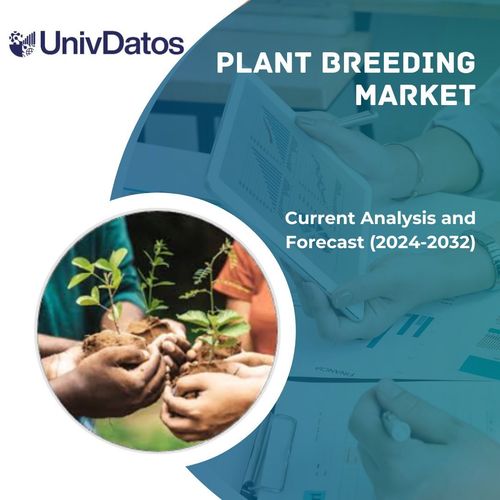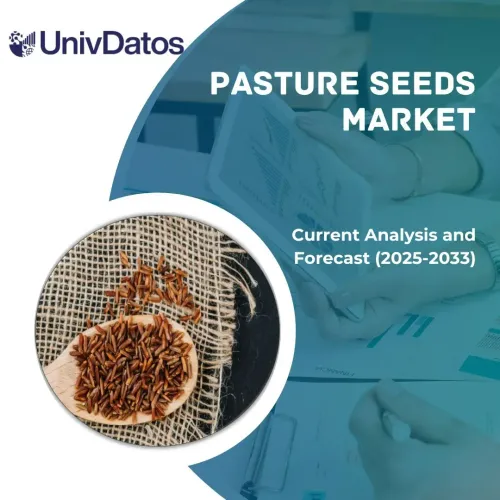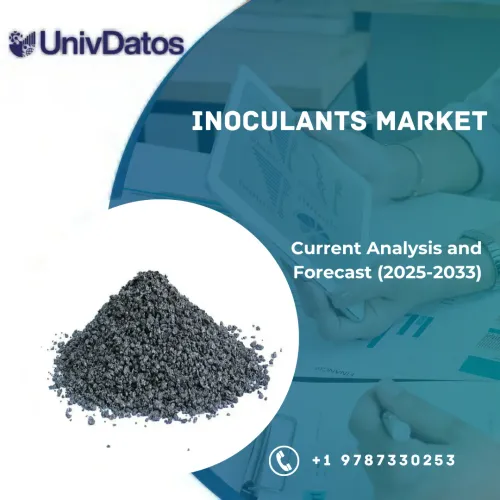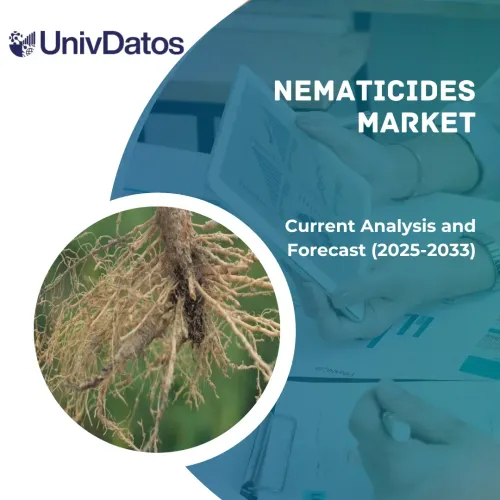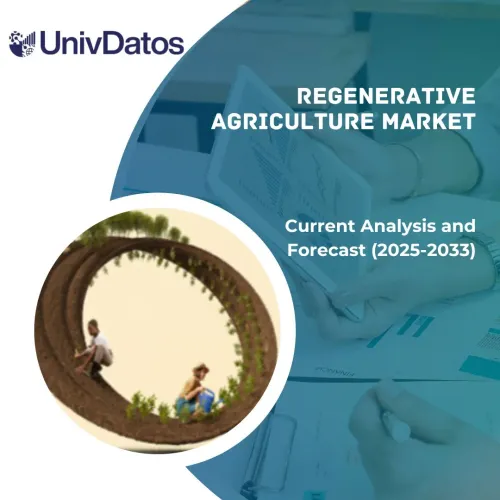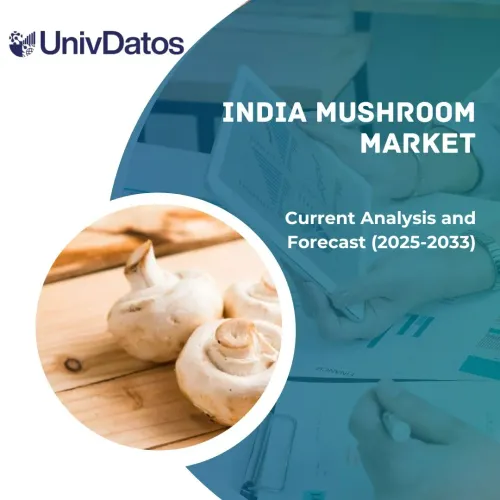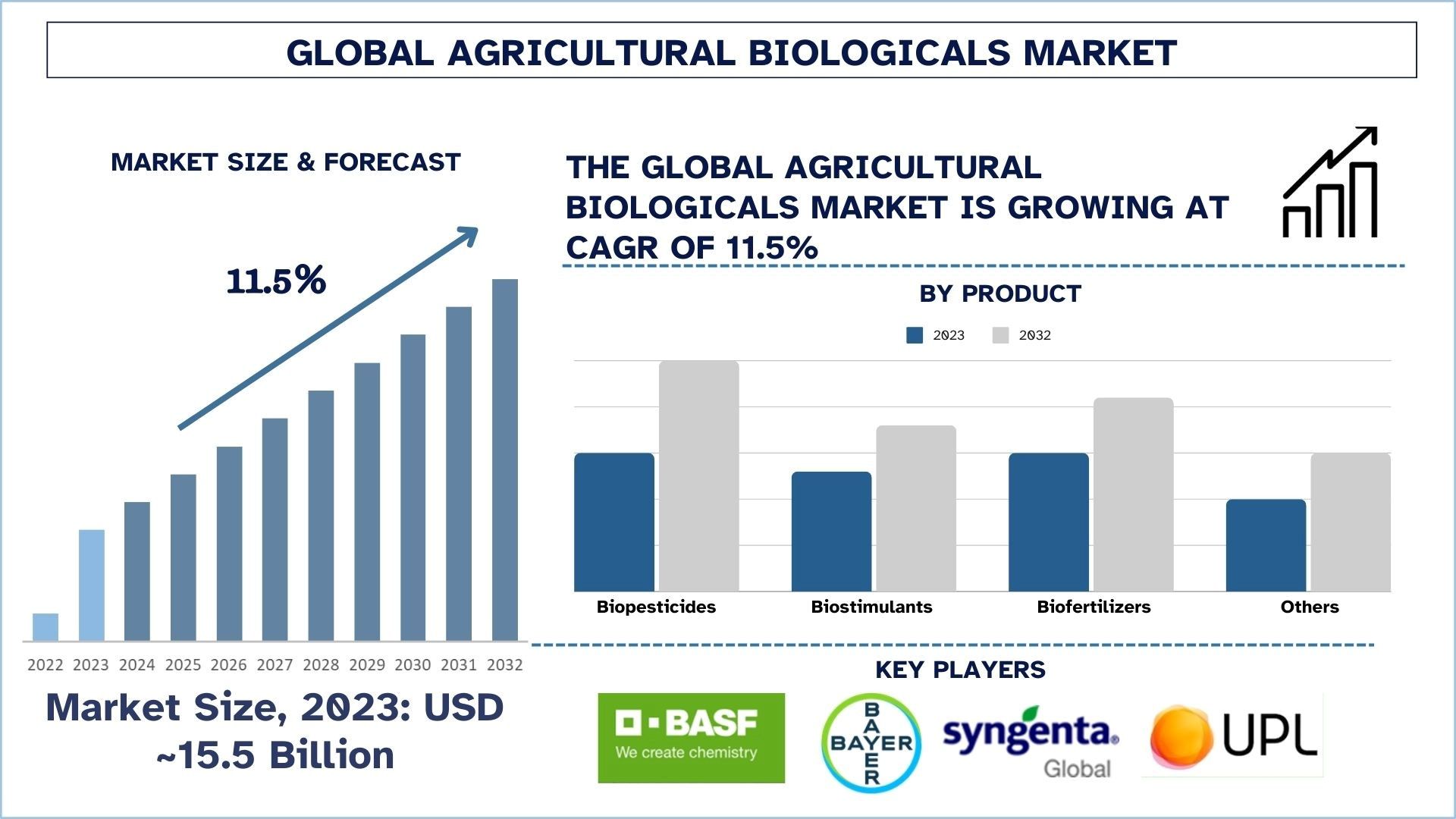
농업용 바이오 제품 시장 규모 및 예측
농업용 바이오 제품 시장은 2023년에 약 155억 달러로 평가되었으며, 유기농 농업 관행의 증가로 인해 해충, 질병 및 토양 비옥도를 자연적으로 관리하기 위한 바이오 제품에 대한 수요가 발생하여 예측 기간(2024-2032) 동안 약 11.5%의 상당한 CAGR로 성장할 것으로 예상됩니다.
농업용 바이오 제품 시장 분석
농업용 바이오 제품은 수확량을 개선하고 해충 및 질병을 예방하거나 통제하기 위해 농업에 사용되는 생물학적 기원의 물질입니다. 일부 바이오 살충제, 바이오 자극제 및 바이오 비료는 미생물, 식물 또는 유기 화합물입니다. 이러한 제품은 농업에 사용되는 화학 기반 솔루션에 대한 대안인 친환경 솔루션을 제공합니다. 또한 토양을 더 건강하게 만들고, 작물을 더 강하게 만들고, 농업 과정을 더 효율적으로 만듭니다.
농업용 바이오 부문을 확장하기 위해 제조업체는 특정 작물 및 지리적 영역에 대한 고급 바이오 솔루션의 연구 개발에 자금을 투자하고 있습니다. 그들은 대학과의 연구 협력을 구축하고, 디지털 농업 앱을 사용하여 농부의 지식을 구축하고, 새로운 지역으로 유통 네트워크를 확장하고 있습니다. 또한 시장 침투를 늘리기 위해 최소 비용 제조 및 현지 생산에 집중하고 있습니다.
예를 들어, 2024년 7월 8일 – 최첨단 농업용 바이오 솔루션의 선두 주자인 Syngenta Biologicals와 지속 가능한 농업을 장려하는 Silicon Valley 생명공학 회사인 Intrinsyx Bio는 새로운 바이오 솔루션을 전 세계 농업 시장에 제공하기 위한 협력을 발표했습니다.
2024년 11월 13일, Biotechnology Innovation Organization(BIO)은 USDA의 동물 및 식물 건강 검사 서비스(APHIS)가 7 CFR 파트 340에 따라 변형된 식물에 대한 생명공학 면제의 범위를 확대한 발표를 환영합니다. 이 유망한 업데이트는 과학 및 생명공학의 최신 발전을 지원하여 더 광범위한 농산물 전반에 걸쳐 혁신을 장려합니다.
농업용 바이오 제품 시장 동향
이 섹션에서는 당사 연구 전문가가 확인한 농업용 바이오 제품 시장의 다양한 부문에 영향을 미치는 주요 시장 동향에 대해 설명합니다.
종자 처리, 농업용 바이오 제품 산업 변화
종자 처리는 예측 기간(2024-2032) 동안 상당한 CAGR로 성장할 것으로 예상됩니다. 이 부문은 종자 발아, 묘목의 해충 방제에 도움이 되며 시장에서 작물 수확량을 향상시킵니다. 처리된 종자의 소비는 수확량 증가 및 비용 절감과 같은 요인으로 인해 증가하고 있습니다. 생물학적 종자 처리의 구현은 생물 접종제와 생물 방제제를 제품에 통합하여 달성됩니다. 예를 들어, 2023년 6월 5일, Syngenta Crop Protection의 Seedcare 사업부는 농부들이 농업 운영의 지속 가능성을 높이는 데 도움이 되면서 다양한 토양 해충에 대한 뛰어난 방제를 제공하는 새로운 종자 처리제인 EQUENTO®를 출시했습니다.

북미가 시장을 주도합니다.
북미에서는 지속 가능한 농업에 대한 직접적인 수요가 증가하고 있으며 농업용 바이오 제품 시장에서 화학 살충제 사용을 통제하기 위한 법률이 결합되어 있습니다. 이 지역의 농부들은 작물 수확량을 늘리고 환경과 인간 건강에 안전한 식품을 제공하기 위해 생물학적 방법을 사용하고 있습니다. 현재 유기농 농업 관행의 증가와 USDA 유기농 인증과 같은 당국의 지원은 활용을 가속화합니다. 또한 기업은 지역용 제품을 설계하고 농업 협동조합과의 제휴를 통해 이러한 요구에 대응하여 R&D 예산을 늘립니다. 그들은 또한 개인적인 시연을 통해 농부들에게 바이오 제품의 이점에 대해 알리는 아이디어를 강조합니다.
예를 들어, 2021년 1월 11일, USDA 농산물 마케팅 서비스(AMS) 국가 유기농 프로그램(NOP)은 인도의 농업 및 가공 식품 제품 수출 개발 당국(APEDA)과의 인정 계약을 종료했습니다.
2022년 7월 12일 이후에는 인도에서 미국으로 유기농 제품을 수입하려면 USDA 공인 인증 기관의 USDA 유기농 인증이 필요합니다. APEDA 공인 인증 기관은 언제든지 USDA 유기농 프로그램에 대한 직접 인증을 위해 NOP에 신청할 수 있습니다.
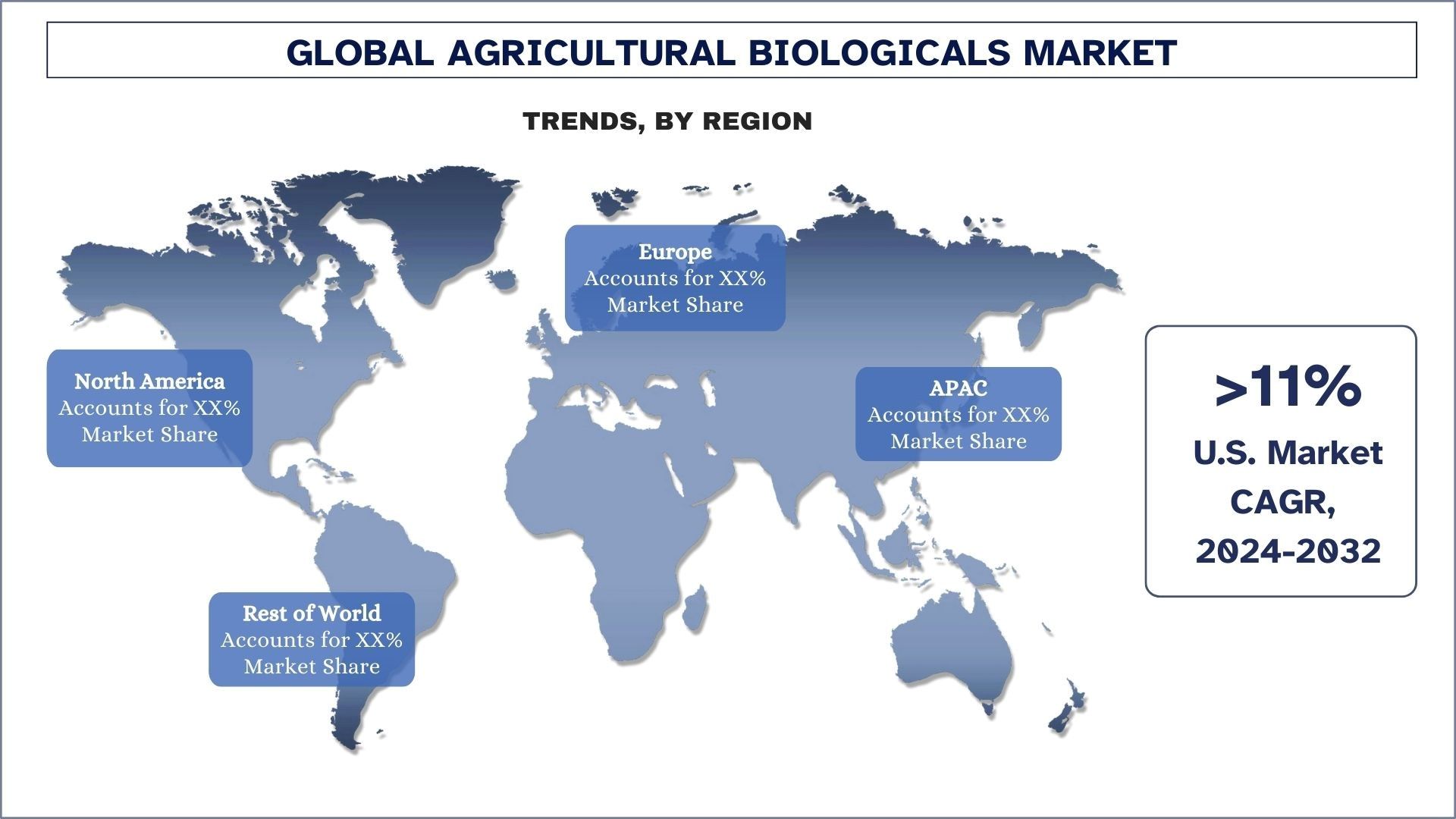
농업용 바이오 제품 산업 개요
농업용 바이오 제품 시장은 여러 글로벌 및 국제 플레이어와 경쟁적입니다. 주요 플레이어는 파트너십, 계약, 협력, 신제품 출시, 지리적 확장, 합병 및 인수와 같은 다양한 성장 전략을 채택하여 시장 입지를 강화하고 있습니다. 시장에서 활동하는 주요 플레이어로는 BASF, Bayer AG, Syngenta Crop Protection AG, UPL, FMC Corporation, Corteva (DowDuPont), Valent Group, Certis USA L.L.C., Koppert, Andermatt Group AG가 있습니다.
농업용 바이오 제품 시장 뉴스
2024년 9월 30일, 세계적인 농업 과학 회사인 FMC Corporation(NYSE: FMC)은 곰팡이 기반 바이오 솔루션의 선구자이자 선두 주자인 Ballagro Agro Tecnologia Ltda.와 브라질 재배자에게 차별화된 바이오 솔루션의 광범위한 포트폴리오를 제공하기 위한 계약을 발표했습니다. 이 계약은 브라질과 같은 주요 시장에서 바이오 제품 플랫폼을 성장시키기 위한 FMC의 전략 계획의 일부입니다.
2022년 9월 20일, 미국 전역의 열 및 곡물 작물 농부들은 영양 문제를 극복하고 수익성을 극대화하기 위해 맞춤화된 토양 솔루션을 제공합니다. Locus Agricultural Solutions®(Locus AG)는 주력 Rhizolizer® 및 Pantego® 바이오 제품 라인을 확장하여 새로운 미생물 균주를 특징으로 하는 11개의 새로운 작물별 제형을 출시했습니다.
2022년 10월 18일 – Bayer는 농업용 바이오 제품의 연구 개발을 가속화하기 위해 Ginkgo Bioworks와 다년간의 전략적 파트너십을 시작하기 위해 이전에 발표된 거래를 완료했다고 발표했습니다.
농업용 바이오 제품 시장 보고서 범위
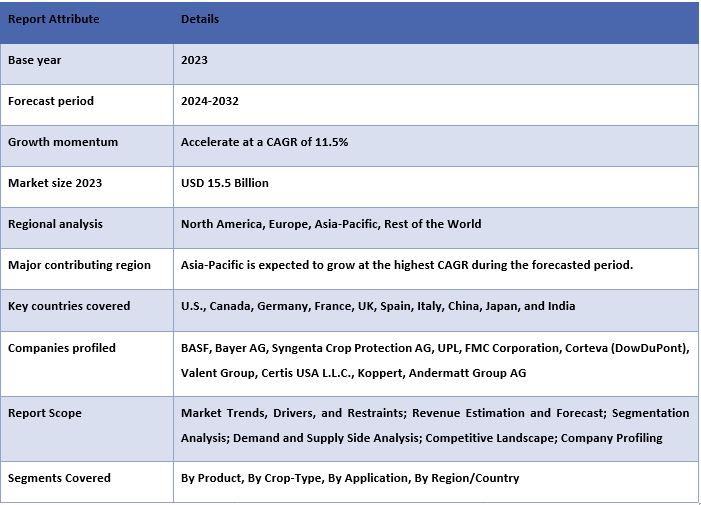
이 보고서를 구매해야 하는 이유:
이 연구에는 인증된 주요 산업 전문가가 검증한 시장 규모 측정 및 예측 분석이 포함됩니다.
이 보고서는 전체 산업 성과에 대한 빠른 검토를 한눈에 제공합니다.
이 보고서는 주요 비즈니스 재무, 제품 포트폴리오, 확장 전략 및 최근 개발에 대한 주요 초점을 가지고 저명한 산업 동료에 대한 심층 분석을 다룹니다.
산업에 만연한 동인, 제약, 주요 동향 및 기회에 대한 자세한 조사.
이 연구는 다양한 부문에 걸쳐 시장을 포괄적으로 다룹니다.
산업에 대한 심층적인 지역 수준 분석.
사용자 정의 옵션:
글로벌 농업용 바이오 제품 시장은 요구 사항 또는 기타 시장 부문에 따라 추가로 사용자 정의할 수 있습니다. 이 외에도 UMI는 귀하가 고유한 비즈니스 요구 사항을 가지고 있음을 이해하므로 귀하의 요구 사항에 완전히 적합한 보고서를 얻으려면 언제든지 저희에게 연락하십시오.
목차
농업용 바이오 소재 시장 분석 (2022-2032)을 위한 연구 방법론
글로벌 농업용 바이오 소재 시장의 과거 시장 분석, 현재 시장 추정 및 미래 시장 예측은 주요 지역에서 농업용 바이오 소재의 채택을 분석하고 평가하기 위해 수행된 세 가지 주요 단계였습니다. 과거 시장 데이터를 수집하고 현재 시장 규모를 추정하기 위해 광범위한 2차 연구가 수행되었습니다. 둘째, 이러한 통찰력을 검증하기 위해 수많은 결과와 가정이 고려되었습니다. 또한 글로벌 농업용 바이오 소재 시장의 가치 사슬 전반에 걸쳐 업계 전문가와 광범위한 1차 인터뷰도 수행되었습니다. 1차 인터뷰를 통해 시장 수치를 가정하고 검증한 후, 전체 시장 규모를 예측하기 위해 하향식/상향식 접근 방식을 사용했습니다. 이후 산업의 세분 시장 및 하위 세분 시장의 시장 규모를 추정하고 분석하기 위해 시장 세분화 및 데이터 삼각 측량 방법이 채택되었습니다. 자세한 방법론은 아래에 설명되어 있습니다.
과거 시장 규모 분석
1단계: 2차 출처 심층 연구:
연례 보고서 및 재무제표, 실적 발표, 보도 자료 등과 같은 회사 내부 출처와 저널, 뉴스 및 기사, 정부 간행물, 경쟁사 간행물, 부문 보고서, 타사 데이터베이스 및 기타 신뢰할 수 있는 간행물을 포함한 외부 출처를 통해 농업용 바이오 소재 시장의 과거 시장 규모를 확보하기 위해 자세한 2차 연구가 수행되었습니다.
2단계: 시장 세분화:
농업용 바이오 소재 시장의 과거 시장 규모를 확보한 후, 주요 지역에 대한 다양한 세분 시장 및 하위 세분 시장에 대한 과거 시장 통찰력과 점유율을 수집하기 위해 자세한 2차 분석을 수행했습니다. 주요 세분 시장은 보고서에 제품, 작물 유형, 응용 분야 및 지역으로 포함됩니다. 해당 지역에서 테스트 모델의 전반적인 채택을 평가하기 위해 추가적으로 국가 수준 분석이 수행되었습니다.
3단계: 요인 분석:
다양한 세분 시장 및 하위 세분 시장의 과거 시장 규모를 확보한 후, 농업용 바이오 소재 시장의 현재 시장 규모를 추정하기 위해 자세한 요인 분석을 수행했습니다. 또한 농업용 바이오 소재 시장의 제품, 작물 유형, 응용 분야 및 지역과 같은 종속 변수와 독립 변수를 사용하여 요인 분석을 수행했습니다. 전 세계 농업용 바이오 소재 시장 부문에서 최고의 파트너십, 합병 및 인수, 사업 확장 및 제품 출시를 고려하여 수요 및 공급 측면 시나리오에 대한 철저한 분석이 수행되었습니다.
현재 시장 규모 추정 및 예측
현재 시장 규모 산정: 위 3단계의 실행 가능한 통찰력을 바탕으로 현재 시장 규모, 글로벌 농업용 바이오 소재 시장의 주요 업체 및 세분 시장의 시장 점유율에 도달했습니다. 필요한 모든 비율 점유율 분할 및 시장 세분화는 위에서 언급한 2차 접근 방식을 사용하여 결정되었으며 1차 인터뷰를 통해 검증되었습니다.
추정 및 예측: 시장 추정 및 예측을 위해 동인 및 추세, 제약 및 이해 관계자가 이용할 수 있는 기회를 포함한 다양한 요인에 가중치가 할당되었습니다. 이러한 요인을 분석한 후 관련 예측 기법, 즉 하향식/상향식 접근 방식을 적용하여 전 세계 주요 시장에서 다양한 세분 시장 및 하위 세분 시장에 대한 2032년 시장 예측에 도달했습니다. 시장 규모를 추정하기 위해 채택된 연구 방법론은 다음을 포함합니다.
주요 국내 시장에서 농업용 바이오 소재 시장의 수익(USD) 및 채택률 측면에서 산업의 시장 규모
시장 세분 시장 및 하위 세분 시장의 모든 비율 점유율, 분할 및 세분화
제공되는 제품 측면에서 글로벌 농업용 바이오 소재 시장의 주요 업체. 또한 빠르게 성장하는 시장에서 경쟁하기 위해 이러한 업체가 채택한 성장 전략
시장 규모 및 점유율 검증
1차 연구: 주요 지역에서 최고 경영진(CXO/VP, 영업 책임자, 마케팅 책임자, 운영 책임자, 지역 책임자, 국가 책임자 등)을 포함한 핵심 오피니언 리더(KOL)와 심층 인터뷰를 수행했습니다. 그런 다음 1차 연구 결과를 요약하고 통계 분석을 수행하여 명시된 가설을 입증했습니다. 1차 연구의 입력은 2차 결과와 통합되어 정보를 실행 가능한 통찰력으로 전환했습니다.
다양한 지역의 주요 참가자 분할
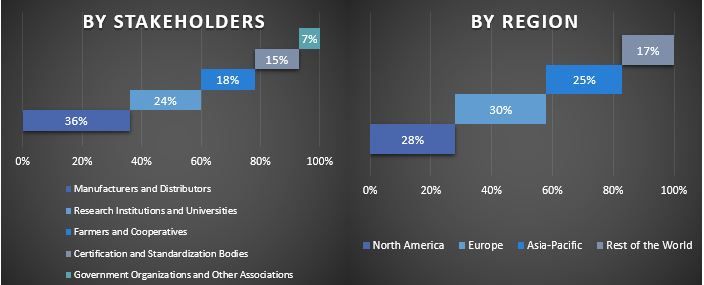
시장 엔지니어링
전반적인 시장 추정을 완료하고 글로벌 농업용 바이오 소재 시장의 각 세분 시장 및 하위 세분 시장에 대한 정확한 통계 수치에 도달하기 위해 데이터 삼각 측량 기법이 사용되었습니다. 글로벌 농업용 바이오 소재 시장의 제품, 작물 유형, 응용 분야 및 지역에서 다양한 매개변수와 추세를 연구한 후 데이터를 여러 세분 시장 및 하위 세분 시장으로 분할했습니다.
글로벌 농업용 바이오 소재 시장 연구의 주요 목표
글로벌 농업용 바이오 소재 시장의 현재 및 미래 시장 동향이 연구에서 정확히 지적되었습니다. 투자자는 연구에서 수행된 질적 및 양적 분석을 기반으로 투자에 대한 재량권을 행사하기 위한 전략적 통찰력을 얻을 수 있습니다. 현재 및 미래 시장 동향은 지역 수준에서 시장의 전반적인 매력도를 결정하여 산업 참가자가 미개척 시장을 활용하여 최초 진입자 이점으로부터 이익을 얻을 수 있는 플랫폼을 제공했습니다. 연구의 다른 양적 목표는 다음과 같습니다.
가치(USD) 측면에서 농업용 바이오 소재 시장의 현재 및 예측 시장 규모를 분석합니다. 또한 다양한 세분 시장 및 하위 세분 시장의 현재 및 예측 시장 규모를 분석합니다.
연구의 세분 시장에는 제품, 작물 유형, 응용 분야 및 지역 영역이 포함됩니다.
농업용 바이오 소재에 대한 규제 프레임워크를 정의하고 분석합니다.
다양한 중개자의 존재와 관련된 가치 사슬을 분석하고 산업의 고객 및 경쟁자 행동을 분석합니다.
주요 지역에 대한 농업용 바이오 소재 시장의 현재 및 예측 시장 규모를 분석합니다.
보고서에서 연구된 지역의 주요 국가에는 아시아 태평양, 유럽, 북미 및 기타 지역이 포함됩니다.
농업용 바이오 소재 시장의 회사 프로필 및 시장 참여자가 빠르게 성장하는 시장을 유지하기 위해 채택한 성장 전략.
산업에 대한 심층적인 지역 수준 분석
자주 묻는 질문 자주 묻는 질문
Q1: 농업용 생물학적 제제 시장의 현재 규모와 성장 잠재력은 무엇입니까?
농업용 바이오 제품 시장은 2023년에 155억 달러로 평가되었으며 예측 기간(2024-2032년) 동안 연평균 성장률(CAGR) 11.5%로 성장할 것으로 예상됩니다.
Q2: 농업용 생물학적 제제 시장 성장의 주요 동인은 무엇입니까?
지속 가능한 농업에 대한 수요 증가, 규제 지원 및 정책, 건강 및 환경 영향에 대한 인식 증가, 그리고 유기농업의 성장이 농업용 생물 제제 시장을 견인합니다.
Q3: 제품별 농업용 바이오 제품 시장에서 가장 큰 점유율을 차지하는 부문은 무엇입니까?
생물 농약은 제품별 농업용 생물 제제 시장에서 가장 큰 비중을 차지합니다.
Q4: 농업용 바이오 제품 시장의 주요 동향은 무엇입니까?
통합 해충 관리(IPM)의 채택 증가와 생물학적 R&D에 대한 투자 증가는 농업용 생물학적 제제 시장의 주요 트렌드입니다.
Q5: 어느 지역이 농업용 바이오 제품 시장을 지배할 것인가?
2023년에는 북미가 시장을 장악했습니다.
관련 보고서
이 상품을 구매한 고객님들도 함께 구매하신 상품



